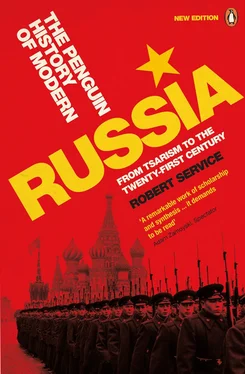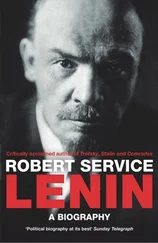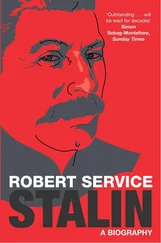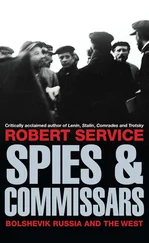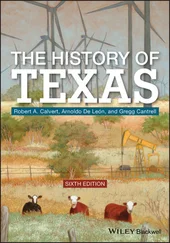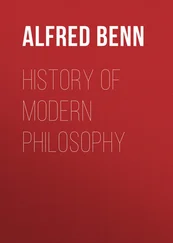Even so, the Okhrana was very efficient at its tasks. The revolutionary leaders had been suppressed in 1907; their various organizations in the Russian Empire were penetrated by police informers, and the arrest of second-rank activists continued. Contact between the émigrés and their followers was patchy.
The repression secured more time for the dynasty; it also strengthened the determination of the revolutionaries to avoid any dilution of their ideas. At the turn of the century it had been the Marxists who had been most popular with political intellectuals. A party had been formed, the Russian Social-Democratic Labour Party, in 1898. But it quickly dissolved into factionalism, especially among the émigré s. One of the factions, the Bolsheviks (or Majoritarians), was led by Vladimir Lenin. His booklet of 1902, What Is To Be Done? , described the need for the party to act as the vanguard of the working class. He laid down that party members should be disciplined in organization and loyal in doctrine. The party in his opinion should be highly centralized. His theories and his divisive activity disrupted the Second Party Congress in 1903. And Lenin compounded his controversial reputation in 1905 by proposing that the projected overthrow of the Romanov monarchy should be followed by a ‘provisional revolutionary democratic dictatorship of the proletariat and the peasantry’ — and he anticipated the use of terror in order to establish the dictatorship. 22
These specifications alarmed his opponents — the so-called Mensheviks (or Minoritarians) — in the Russian Social-Democratic Labour Party who had always contended that Russia should undergo a ‘bourgeois’ revolution and complete her development of a capitalist economy before undertaking the ‘transition to socialism’. They denounced the projected dictatorship as having nothing in common with genuinely socialist politics. And they wanted a more loosely-organized party than the Bolsheviks had devised.
The other great revolutionary party was the Party of Socialist-Revolutionaries, which inherited the traditions of the narodniki of the nineteenth century. Their leading theorist was Viktor Chernov. Unlike the narodniki, the Socialist-Revolutionaries did not think that Russia could move straight into socialism without a capitalist stage of economic development. But whereas the Marxists, be they Bolsheviks or Mensheviks, saw the urban workers as the great revolutionary class, the Socialist-Revolutionaries held the peasantry in higher regard and believed that peasants embodied, however residually, the egalitarian and communal values at the heart of socialism. But the Socialist-Revolutionaries recruited among the working class, and in many cities, were rivals to the Russian Social-Democratic Party. In many ways there were differing emphases rather than totally sharp distinctions between Marxists and Socialist-Revolutionaries in their ideas at lower organizational levels of their respective parties; and they suffered equally at the hands of the Okhrana.
The events of 1905–6 had already shown that if ever the people were allowed free elections, it would be these three parties that would vie for victory. The Kadets recognized the limitations of their own popularity and responded by adopting a policy of radical agrarian reform. They proposed to transfer the land of the gentry to the peasantry with suitable monetary compensation for the gentry. But this would never be sufficient to outmatch the appeal of the Socialist-Revolutionaries, Mensheviks and Bolsheviks unless that franchise was formulated in such a way as to give advantage to the middle classes.
Truly this was already a creaky structure of power. Matters were not helped by the fact that the Emperor was not respected. He was a monarch whose capacity for hard work was not matched by outstanding intelligence. He had no clear vision for Russia’s future and wore himself out with day-to-day political administration. He found contentment only in the company of his family and was thought to be hen-pecked by his spouse Alexandra. In fact he was more independent from her than the rumours suggested, but the rumours were believed. Furthermore, he surrounded himself with advisers who included a variety of mystics and quacks. His favouritism towards the Siberian ‘holy man’ Grigori Rasputin became notorious. Rasputin had an uncanny ability to staunch the bleeding of the haemophiliac heir to the throne, Aleksei; but, protected by the Imperial couple, Rasputin gambled and wenched and intrigued in St Petersburg. The Romanovs sank further into infamy.
It was not that Nicholas entirely isolated himself from the people. He attended religious ceremonies; he met groups of peasants. In 1913 the tercentenary of the Romanov dynasty was celebrated with acclaim, and the Emperor was filmed for the benefit of cinema-goers. But he seems to have had a horror of his urban subjects: intellectuals, politicians and workers were distrusted by him. 23Nicholas was out of joint with his times.
Yet the immediate danger to the regime had receded. The empire’s subjects settled back into acceptance that the Okhrana and the armed forces were too strong to be challenged. Peasant disturbances were few. Stolypin had been ruthless ordering the execution of 2796 peasant rebel leaders after field courts-martial. 24The hangman’s noose was known as ‘Stolypin’s necktie’. Student demonstrations ceased. National resistance in the non-Russian regions virtually disappeared. Professional associations behaved circumspectly so as to avoid being closed down by the authorities. The labour movement, too, was disrupted by police intervention. Strikes ceased for a while. But as the economy experienced an upturn and mass unemployment fell, workers regained their militant confidence. Sporadic industrial conflicts returned, and a single event could spark off trouble across the empire.
This eventually occurred in April 1912 when police fired upon striking miners in the gold-fields near the river Lena in Siberia. Demonstrations took place in sympathy elsewhere. A second upsurge of opposition took place in June 1914 in St Petersburg. Wages and living conditions were a basic cause of grievance; so, too, was the resentment against the current political restrictions. 25
The recurrence of strikes and demonstrations was an index of the liability of the tsarist political and economic order to intense strain. The Emperor, however, chose to strengthen his monarchical powers rather than seek a deal with the elected deputies in the State Duma. Not only he but also his government and his provincial governors could act without reference to legal procedures. The Duma could be and was dispersed by him without consultation; electoral rules were redrawn on his orders. Opponents could be sentenced to ‘administrative exile’ by the Ministry of Internal Affairs without reference to the courts — and this could involve banishment to the harshest regions of Siberia. In 1912, 2.3 million people lived under martial law and 63.3 million under ‘reinforced protection’; provincial governors increasingly issued their own regulations and enforced them by administrative order. 26The ‘police state’ of the Romanovs was very far from complete and there were signs that civil society could make further advances at the state’s expense. Yet in many aspects there was little end to the arbitrary governance.
Nicholas would have made things easier for himself if he had allowed himself to be restrained constitutionally by the State Duma. Then the upper and middle classes, through their political parties, would have incurred the hostility that was aimed at the Emperor. Oppressive rule could have been reduced at a stroke. The decadence and idiocy of Nicholas’s court would have ceased to invite critical scrutiny; and by constitutionalizing his position, he might even have saved his dynasty from destruction. As things stood, some kind of revolutionary clash was practically inevitable. Even the Octobrists were unsympathetic to their sovereign after his humiliation of Stolypin.
Читать дальше
